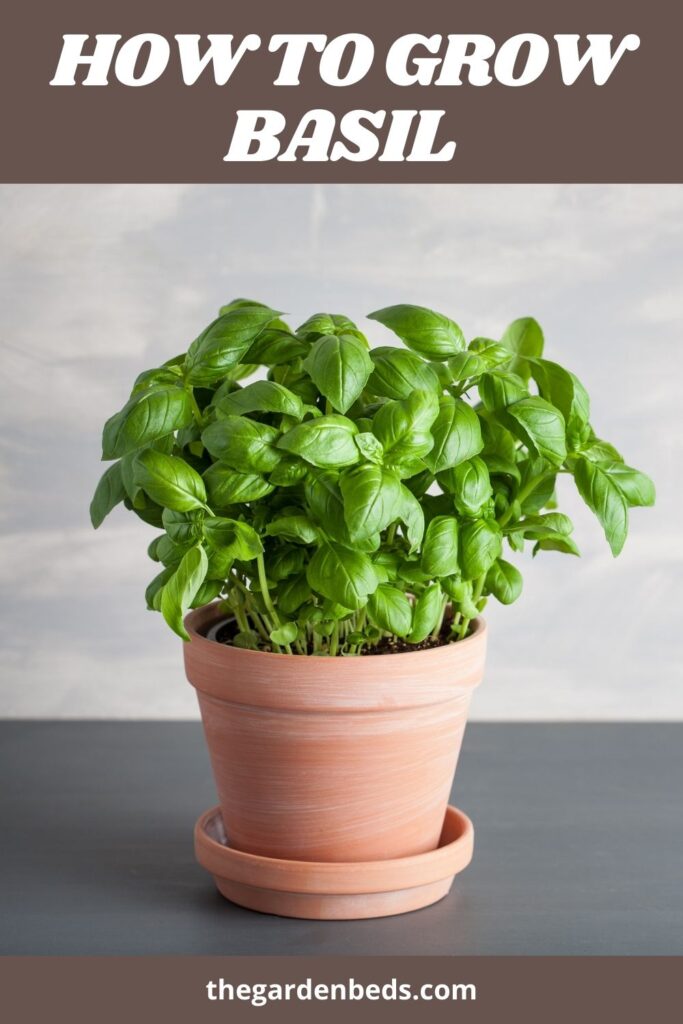Today we’ll share best and easiest tips how to grow your own basil at home. Keep Reading!!!
Basil (Ocimum basilicum) is often referred to as the king of herbs. Basil plants are certainly one of the most popular herbs grown in the home garden. Growing basil outdoors or in a container is very easy to do if you follow these simple steps for how to grow basil.
There’s nothing quite like tasty homemade pesto, and if you’ve been longing to take your recipe up a notch, growing your own basil might be the perfect solution. Along with saving money on store-bought basil, this popular herb can easily be grown inside all year round.
There are a slew of varieties, although sweet basil is the most common. With its glossy leaves and spikes of white flowers, it has a subtle anise flavor and grows 1 to 2 feet high. The cultivars that are available all boast unique differences, from their appearance to their size and taste.
If you’re up for adding this herb to your own garden—and using it to enhance your pesto, salads, or tomato dishes—scroll down for our helpful guide to growing it.
Few words about this herb

Sweet basil (Ocimum basilicum) plays a role in many Mediterranean, and particularly Italian, cuisines. It forms the basis of pesto and adds a distinctive flavor to salads, pasta, pizza, and other dishes. Indonesian, Thai, and Vietnamese cuisines also feature this herb.
In the diet, sweet basil can provide vitamins, minerals, and a range of antioxidants. Its essential oil may also have medicinal benefits.
This herb is available in many grocery stores, while other varieties have different tastes and fragrances.
Another type of basil is tulsi, or holy basil (Ocimum santum). This plant plays a therapeutic role in Tamil and Ayurvedic medicines, which are predominantly practiced in Southeast Asia. This is different from sweet basil.
Health benefits (source)
- Reducing oxidative stress
- Supporting liver health
- Protecting against skin aging
- Reducing high blood sugar
- Supporting cardiovascular health
- Boosting mental health
- Reducing inflammation and swelling
Growing Tips
Start indoors in individual pots, plant seeds outdoors when frosts are over and the ground is warm, or buy bedding plants. If you start plants indoors, heating cables are helpful, since this is a tropical plant that doesn’t take kindly to cold. Plant in full sun, in well-drained soil enriched with compost, aged manure, or other organic materials.
Space large-leaved cultivars, such as Lettuce Leaf, 1½ feet apart and small-leaved types, such as Spicy Globe, 1 foot apart. Basil needs ample water. Mulch your plants to retain moisture after the soil has warmed. Pinch plants frequently to encourage bushy growth, and pick off flower heads regularly so plants put their energy into foliage production.
Grow a few plants in containers so you can bring them indoors before fall frost. Or make a second sowing outdoors in June in order to have small plants to pot up and bring indoors for winter. As frost nears, you can also cut off some end shoots of the plants in the garden and root them in water, to be potted later.
Basil can be subject to various fungal diseases, including Fusarium wilt, gray mold, and black spot, as well as damping-off in seedlings. Avoid these problems by waiting to plant outside until the soil has warmed and by not overcrowding plants. Japanese beetles may skeletonize plant leaves; control pests by hand picking.

Harvesting
Harvest leaves by pinching them from the stems anytime after the young plants have reached a height of 6 to 8 inches. Pinch the leaves from the tips of the stems to encourage the plant to branch and make more leaves. Try to keep the stems pinched even if you don’t use the leaves; otherwise, the plant will begin to flower and make seeds, and will stop producing leaves. At the first prediction of even the lightest frost, go ahead and harvest all your basil because it will quickly turn black in cold weather. Make easy work of this by cutting the entire plants off at ground level, then pick off the best leaves. You can dry them, but freezing them or using them in vinegar best preserves the herb’s flavour. You can also use the leaves to flavour oils and pesto, which should be kept refrigerated or frozen.
You can also keep cut stems fresh for a few days by putting the cut ends in water just like a cut flower. They will add a fresh fragrance to the air.
Storing
Store leaves in the fridge for up to three days. Or, stand cut stems in a glass of water ready to use. To freeze basil, chop the leaves and place them in an ice-cube tray, cover with water and pop in the freezer. Use within five months.


